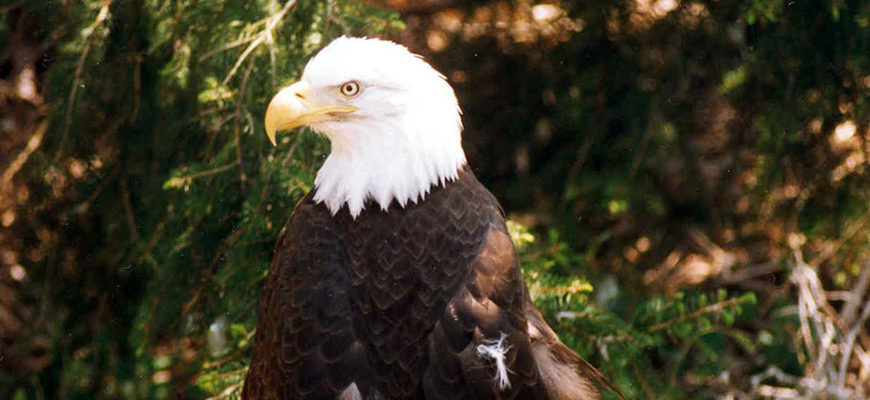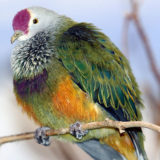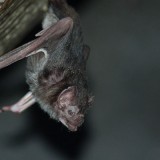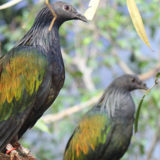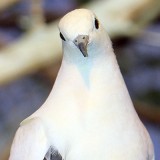RANGE
A North American species that is widespread through Alaska and Canada, scattered throughout the Lower 48 states
HABITAT
Bald eagles prefer large, undisturbed forested areas adjacent to large bodies of water such as lakes, rivers, wetlands, reservoirs, and sea coasts.
SIZE AND APPEARANCE
Head to Rump: 36 inches
Wingspan: 6 – 8 feet
Weight: 10 – 14 lbs
Lifespan: 20 – 30 years
Females are larger in size overall than males.
The adult bald eagle’s distinctive brown body and white head and tail make it easy to identify. It is a large bodied raptor, with broad wings, large head, and long, curved bill. The bald eagle has unfeathered yellow legs with large feet and sharp talons. Immature birds are covered with mostly dark feathers and there is a transition in plumage over the first five years. Each successive molt being closer to adult plumage with most birds attaining the classic adult pattern between their 4th and 5th year.
REPRODUCTION
- Breeding is variable and dependent upon geographic location. Late Spring and Summer in the northern part of its range; winter in the southern part of the range.
- Bald eagles are monogamous, and form pair bonds that last their whole lives.
- Incubation period: 35 days
- Clutch size: 1 – 3 eggs
- Young fledge the nest at about 12 – 14 weeks of age
DIET
Bald Eagles are opportunistic foragers. They eat a wide range of prey, preferring fish, but will readily hunt and eat small mammals, birds (waterfowl especially), reptiles, amphibians and carrion.
BEHAVIOR
- Diurnal, which means it is active during the day
- Will typically harass and steal the prey from other raptors
- Occasionally hunt cooperatively, with one individual flushing prey towards another.
- Reinforce their pair bonds through aerial displays in which they lock talons and tumble through the air, letting go just in time to avoid crashing into the ground.
- When soaring, will hold its wings flat, like a board.
- When flying, flaps its wings with relatively slow wing beats.
POINTS OF INTEREST
- The United States adopted the Bald Eagle as the national symbol in 1782. Benjamin Franklin, however, did not like this choice because of the “cowardly and thieving” behaviors of the bald eagle, and thought the wild turkey would have been a better choice.
- When watching TV or listening to the radio, what many people think of a as a bald eagle call, is actually the call of the red-tailed hawk. The bald eagle’s call is best described as ‘seagull-like chirps’ and the red-tailed hawk’s impressive “SKREEEEEEE” call was seen as more impressive.
- Bald eagle nests can be extremely large. Eagles will return to the same nest and add to it every year. Nests can be up to 9 feet in diameter, 4 – 6 ft tall, and weigh up to a ton!
- The bald eagle is an Endangered Species Act conservation success story. Once abundant in North America, the species became rare in the mid-to-late 1900s — the victim of trapping, shooting, poisoning, as well as pesticide-caused reproductive failures due to exposure to the pesticide DDT. Population numbers were as low as 500 nesting pairs in the lower 48 states, down from an estimated 300,000 – 500,000 in the 1700’s. In 1978, the bird was listed for protection under the Endangered Species Act. Since 1980, the banning of the use of DDT and other hunting/trapping/poisoning restrictions has led to a dramatic population resurgence. By the late 1990s, breeding populations of bald eagles could be found throughout most of North America. In June 2007, the bird’s recovery prompted its removal from the Endangered Species list. Today, the lower 48 states now have over 5,000 nesting pairs, with about 70,000 bald eagles in all of North America.
STATUS
Least Concern, LC (IUCN)
http://www.iucnredlist.org/details/22695144/0
References:
U.S. Fish & Wildlife Service – Bald Eagle
https://www.fws.gov/midwest/Eagle/recovery/biologue.html
The Cornell Lab of Ornithology
https://www.allaboutbirds.org/guide/bald_eagle/id

